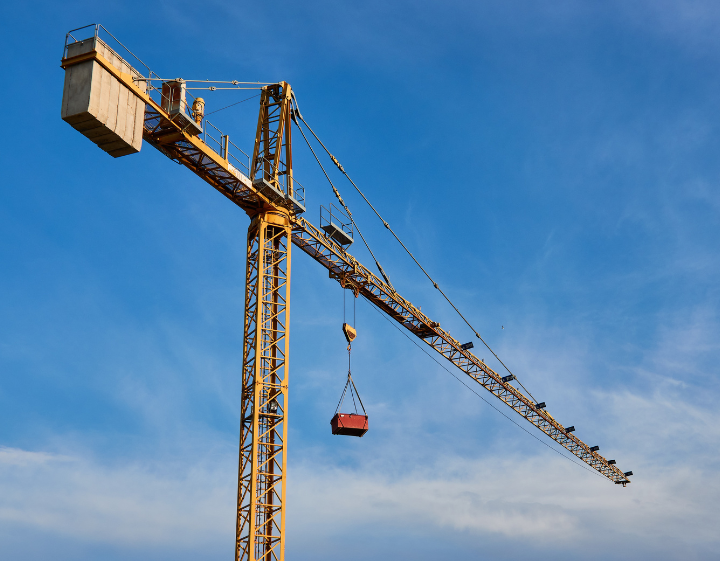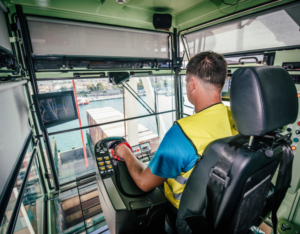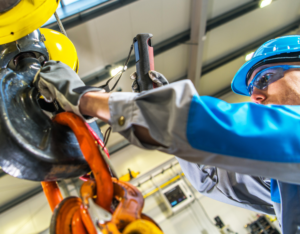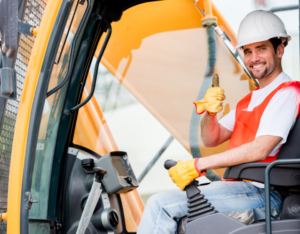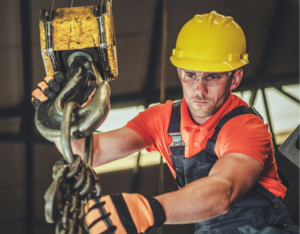Introduction
Cranes play a vital role in construction sites, enabling the lifting and moving of heavy materials with ease and efficiency. From erecting skyscrapers to assembling bridges, cranes have become an indispensable tool in the construction industry. However, working with cranes also involves a considerable amount of risk, and adhering to safety protocols is of utmost importance to prevent accidents and ensure the well-being of workers.
This blog post will delve into the essential safety measures that should be followed during crane rental operations on construction sites. It aims to provide valuable information to construction companies, project managers, and workers involved in crane operations, offering guidance and advice to prevent potential hazards.
The safety measures covered in this post will encompass various aspects, including pre-operational checks, proper training and certification for crane operators, rigging and signaling procedures, equipment inspections, and emergency response protocols. By understanding and implementing these safety measures, construction professionals can mitigate risks, ensure the smooth and safe operation of cranes, and safeguard the lives of workers on site.
With a comprehensive understanding of crane safety protocols, construction companies can not only protect their workforce but also improve project efficiency.

Understanding Crane Rental Basics
Crane rental plays a crucial role in construction projects, providing the necessary lifting and hoisting capabilities. There are various types of cranes commonly rented for construction projects, including mobile cranes, tower cranes, and telescopic cranes.
Mobile cranes are versatile and can be easily transported to different job sites. They are often used in scenarios where frequent crane relocation is required or when working on smaller projects with limited space.
Tower cranes, on the other hand, are commonly used in large-scale construction projects that require heavy lifting over extended periods. These cranes are anchored to the ground and have a high lifting capacity, making them suitable for projects such as building skyscrapers.
Telescopic cranes, also known as boom cranes, are designed for flexibility and reach. They feature an extendable boom that allows for lifting heavy objects at various heights and positions. These cranes are often used in construction sites where access to confined spaces or elevated areas is necessary.
Cranes are typically used on construction sites for tasks such as lifting and installing materials, moving heavy equipment, and assisting in building structures. They are commonly employed in projects involving the construction of high-rise buildings, bridges, and infrastructure projects.
Understanding the different types of cranes and their applications is essential for effectively planning crane rental operations on construction sites. By considering the specific requirements of a project and selecting the appropriate crane, construction professionals can ensure the safety and efficiency of their operations.
Pre-Operation Safety Protocols
One of the most crucial aspects of crane rental operations on construction sites is ensuring the safety of operators and workers. Implementing pre-operation safety protocols is vital to prevent accidents and maintain efficiency in construction projects involving cranes.
To begin with, it is essential to prioritize training and certification for crane operators. Operators should undergo proper and comprehensive training courses to ensure they possess the necessary knowledge and skills to operate cranes safely and efficiently. Certification programs help validate their competence, ensuring that they are well-equipped to handle the responsibilities that come with operating cranes.
Pre-operation safety inspections play a significant role in identifying any potential issues or malfunctions that may compromise crane functionality. Crane owners and operators must follow a comprehensive pre-operation inspection checklist. This checklist should cover mechanical, electrical, and structural components, assessing them for integrity and reliability. Regular maintenance and inspection schedules should be strictly adhered to, to avoid any unforeseen breakdowns during crane operations.
Another crucial aspect of pre-operation safety protocols is conducting a site assessment. Construction sites can present various hazards, such as overhead power lines, unstable ground conditions, and inclement weather. Assessing the site for potential risks and hazards is essential to create appropriate safety plans and precautions. By identifying and addressing potential hazards beforehand, the chances of accidents and injuries can be significantly reduced.
Implementing pre-operation safety protocols is paramount in crane rental operations. Prioritizing training and certification, performing thorough safety inspections, and conducting site assessments are fundamental steps to ensure the safety and efficiency of construction projects involving cranes. By following these protocols, construction sites can achieve their intended goals while safeguarding the well-being of all individuals involved.
Safety Measures During Operation
1. Communication Systems:
Effective communication is crucial for safe crane operations. Crane operators must maintain clear and constant communication with ground personnel to ensure smooth and safe movement. The following communication methods should be established and practiced:
- Radio Communication: Utilize two-way radios to allow crane operators and ground personnel to exchange information and instructions easily. This enables real-time communication and updates on load movements, potential hazards, and changing weather conditions.
- Hand Signals: Implement a standardized set of hand signals that crane operators and signalers can use to communicate. This method is important for situations where verbal communication is not possible, such as loud construction noise or long distances between the crane and ground personnel.
2. Load Management:
Proper load management is vital to prevent accidents, ensure stability, and maintain the integrity of the crane and its components. The following guidelines should be adhered to:
- Load Weight Calculation: Determine the load weight accurately before lifting. Utilize load charts provided by the manufacturer and consider the weight of the load, rigging, and any additional equipment.
- Load Balance: Ensure that the load is correctly balanced to prevent tipping or instability. Use appropriate rigging techniques and equipment to distribute the load weight evenly.
- Load Movement: Control load movement carefully to avoid sudden or jerky motions that can cause accidents. Use smooth and gradual motions while maintaining constant communication with ground personnel.
3. Emergency Procedures:
Despite careful planning and preparation, emergencies can still occur during crane operations. It is crucial to have well-defined emergency procedures in place to respond effectively to unforeseen events:
- Mechanical Failures: In the event of a mechanical failure, the crane operator should immediately stop all operations and report the issue to the supervisor. A thorough inspection, maintenance, and repairs by qualified personnel should be conducted before resuming work.
- Sudden Weather Changes: If weather conditions deteriorate rapidly, such as high winds, lightning, or heavy rain, crane operations should be immediately halted. Ground personnel and crane operators should seek shelter and wait for weather conditions to improve before resuming work.
By following these safety measures, crane rental operations can be conducted with utmost caution, ensuring the safety of personnel and facilitating efficient construction projects.
Post-Operation Safety Checks
Post-operation safety checks are crucial in ensuring the safe and efficient operation of cranes on construction sites. After completing the use of a crane, it is essential to follow specific steps to securely shut down and secure the equipment.
The first step in post-operation safety checks is to park the crane in a designated area away from any potential hazards. The crane should be parked on a level surface to prevent any imbalance issues. It should also be ensured that the crane is properly stabilized by extending its outriggers. This will provide stability and prevent any accidental tipping over.
Next, the crane’s controls should be turned off, and the emergency stop button should be engaged. All attachments, such as hooks or slings, should be properly stored to prevent any damage or injuries. The crane boom should be lowered down to a safe position, and all hydraulic and electrical systems should be depressurized and switched off.
Once the crane is securely shut down, a thorough post-operation inspection should be conducted. This inspection includes examining the crane for any signs of wear, damage, or malfunction. Any issues identified during the inspection should be promptly reported and addressed before the crane is used again.
Post-operation safety checks are crucial in identifying and rectifying potential problems before they cause accidents or equipment failures. Following these procedures ensures that cranes are safe to operate and minimizes risks to personnel and property on construction sites.
Regular Maintenance and Record Keeping
Regular maintenance is of utmost importance in ensuring the safety and efficiency of crane rental operations on construction sites. It is crucial to establish a comprehensive maintenance schedule that includes routine inspections and repairs to identify and address any potential issues before they escalate into safety hazards.
By adhering to a regular maintenance schedule, crane operators can ensure that all components of the crane are functioning optimally. Regular checks on critical parts such as the boom, wires, hydraulic systems, and controls are essential to detect any signs of wear, corrosion, or malfunction. Timely repairs and replacements can then be carried out, minimizing the risk of accidents and enhancing the overall performance of the crane.
In addition to regular maintenance, diligent record keeping plays a vital role in compliance with safety standards. Detailed records of maintenance, inspections, and operations should be maintained to track the history and condition of the crane. This helps crane rental companies and construction site managers monitor the maintenance and servicing status of the crane, ensuring that it remains within the required safety parameters.
Furthermore, accurate record keeping enables thorough documentation of any incidents, accidents, or near misses that occur during crane rental operations. This information can serve as valuable evidence in investigations and legal proceedings, if necessary, promoting transparency, accountability, and continuous improvement in crane safety practices.
Regular maintenance and detailed record keeping are essential for the safe and efficient operation of cranes on construction sites. By diligently following maintenance schedules and maintaining comprehensive records, crane operators and rental companies can ensure compliance with safety standards, minimize risks, and contribute to the success of construction projects involving cranes.
Legal and Regulatory Compliance
Crane rental operations on construction sites are subject to strict legal and regulatory compliance measures. In the United States, the Occupational Safety and Health Administration (OSHA) is the regulatory body responsible for setting and enforcing safety standards for crane operations. OSHA’s regulations, specifically those outlined under 29 CFR 1926 Subpart CC, provide comprehensive guidelines for crane safety in the construction industry.
Under these regulations, both the rental company and the construction site managers have legal responsibilities. The rental company must ensure that their cranes are properly inspected, maintained, and operated by trained and competent personnel. They must also provide the necessary documentation, such as load charts and operator manuals, to the construction site managers.
On the other hand, construction site managers are responsible for ensuring that the crane operations comply with OSHA regulations. This includes conducting pre-operational inspections, providing proper training to workers involved in crane operations, implementing safety measures, and appointing a qualified individual as a signal person for the crane.
Failure to comply with these legal responsibilities can lead to severe consequences, including fines, legal action, and most importantly, potential injuries or fatalities on the construction site. Therefore, it is crucial for both rental companies and construction site managers to stay updated with the latest OSHA regulations and strictly adhere to them to promote a safe and efficient working environment.
Creating a Culture of Safety
Creating a Culture of Safety in crane rental operations is paramount to ensuring the well-being of workers and the success of construction projects. To foster a safety-first culture among construction site workers, it is essential to prioritize safety from the top down. This starts with management and supervisors setting the example by consistently following safety protocols and actively promoting safe practices.
Regular communication and ongoing training are crucial components of creating a culture of safety. All personnel involved in crane operations should receive comprehensive training on safe crane operation, rigging techniques, and emergency procedures. Additionally, awareness programs should be implemented to educate workers about potential hazards, promote safe behaviors, and encourage reporting of near misses or accidents.
Open lines of communication are vital for a successful safety culture. Workers should be encouraged to express concerns and suggestions regarding safety, and management should actively listen and address these concerns. Regular safety meetings and toolbox talks can provide opportunities for open dialogue and continuous improvement.
Safety incentives and recognition programs can also help reinforce the importance of a safety-first culture. Recognizing and rewarding individuals or teams that consistently prioritize safety can motivate others to do the same.
By prioritizing safety through ongoing training, awareness programs, open communication, and recognition, a culture of safety can be cultivated on construction sites involving crane rental operations. This will not only protect workers from harm but also enhance the overall efficiency and success of construction projects.
Conclusion
The importance of implementing stringent safety protocols for crane operations on construction sites cannot be overstated. These protocols are essential in ensuring the safety and well-being of workers and the smooth functioning of construction projects involving cranes.
Construction managers and teams should prioritize continuous learning and training in crane safety to stay up-to-date with the latest industry practices and regulations. It is crucial to regularly review and update safety protocols to address any emerging risks or challenges.
By prioritizing crane safety and investing in the necessary training and equipment, construction companies can significantly reduce the likelihood of accidents and injuries, protecting their workforce and reputation. Additionally, adhering to strict safety protocols promotes efficiency and productivity on construction sites, as workers can confidently and effectively operate cranes.
Overall, the implementation of stringent safety protocols for crane rental operations on construction sites is an essential aspect of construction project management. It is imperative to constantly strive for improvement and commit to a culture of safety to ensure the successful execution of construction projects.

